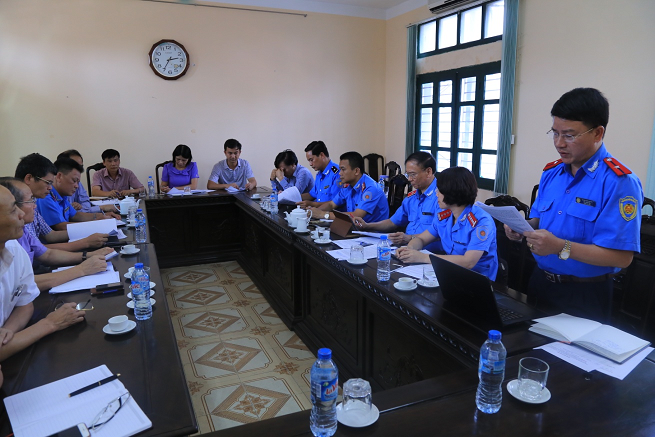In the Law on Public Employees, there are specific regulations regarding the concept of a public service provider. Shortly, Decree 120/2020/ND-CP will be implemented, detailing regulations on public service providers. Below are the fundamental points to know about public service providers.

Basic Points to Know About Public Service Providers (Illustrative Image)
1. What is a public service provider in Vietnam?
According to Clause 1, Article 9 of the Law on Public Employees 2010, a public service provider is an organization established by a competent state agency, political organization, or socio-political organization in accordance with the law, which has a legal entity status and provides public services, serving state management.
In addition, Article 3 of Decree 120/2020/ND-CP (effective from December 1, 2020) regulating the establishment, reorganization, and dissolution of public service providers stipulates that foreign public service providers are those under the ministries, ministerial-level agencies, or agencies under the Government of Vietnam, established by competent state agencies, with legal entity status, seals, and separate accounts as per the law, and headquartered abroad.
Furthermore, Article 2 of the Law on Public Employees also stipulates that individuals recruited according to job position and working at public service providers under a working contract policy, earning salaries from the public service providers' salary fund, are classified as public employees.
2. Classification of public service providers in Vietnam
Clause 2, Article 9 of the Law on Public Employees classifies public service providers as:
- Autonomous public service providers: These are public service providers granted complete autonomy in task execution, finance, organizational structure, and personnel management.
- Non-autonomous public service providers: These are public service providers not yet granted complete autonomy in task execution, finance, organizational structure, and personnel management.
To be specific, Article 2 of Decree 120/2020/ND-CP classifies public service providers as follows:
- Public service providers under the management of ministries and equivalent bodies (excluding those under the Ministry of Public Security and the Ministry of National Defense), including:
- Public service providers under the ministries, including those within the organizational structure of ministries, directly affiliated public service providers, and overseas ones;- Public service providers under general departments and equivalent bodies under ministries (referred to collectively as general departments under ministries);- Public service providers under departments and sub-departments under departments under ministries;- Public service providers under the office of ministries;- Public service providers under departments under general departments under ministries.
- Public service providers under agencies of the Government of Vietnam (including overseas public service providers).
- Public service providers under organizations established by the Government of Vietnam or the Prime Minister of Vietnam, that are not public service providers.
- Public service providers under the management scope of the provincial or municipal People's Committees, including:
- Public service providers under provincial-level People's Committees;- Public service providers under specialized agencies of provincial-level People's Committees (collectively referred to as departments);- Public service providers under sub-departments and equivalents under departments;- Public service providers under other administrative organizations of provincial-level People's Committees.
- Public service providers under district-level People's Committees, district-level towns, provincially-governed cities, and municipally-governed cities.
3. Conditions for establishing public service providers in Vietnam
Article 5 of Decree 120/2020/ND-CP prescribes the conditions for establishing public service providers:
- Compliance with the national sector planning or network planning of public service providers (if available) as approved by competent authorities;
- Meeting the criteria for establishing public service providers as prescribed by relevant specialized legislation;
- Clearly identifying the objectives, functions, and tasks of the public service provider, serving state management;
- Ensuring a minimum of 15 employees (excluding basic, essential public service providers established as per relevant specialized legislation).
- For public service providers self-financing recurrent expenditures, and those self-financing recurrent and investment expenditures, the minimum number of employees as public employees is determined based on the establishment scheme. For providers self-financing recurrent and investment expenditures operating under a business mechanism, the minimum number of employees includes public employees and specialized, professional staff under employment contract policies;- For overseas public service providers, the number of employees is approved by the Prime Minister of the Government of Vietnam in the establishment scheme.
- Having office premises or a land allocation scheme for constructing office premises approved by competent authorities (in the case of constructing new offices); necessary initial equipment; resources and operational funding as per the law.
Note: For overseas public service providers, it must also comply with the foreign policy of the Communist Party, State, and agreements between the Government of Vietnam and the government of the host country regarding the establishment and operation of public service providers.
4. Public service providers implementing autonomy in organizational structure
Article 6 of Decree 120/2020/ND-CP stipulates that public service providers can independently manage their organizational structure as follows:
- Self-financing recurrent and investment expenditures public service providers decide on the establishment, reorganization, and dissolution of units under and directly affiliated to them as per the autonomy scheme approved by competent authorities, ensuring alignment with functions, tasks, and meeting legal criteria, conditions, and standards.
- Self-financing recurrent expenditures public service providers decide on the establishment, reorganization, and dissolution of units not part of the constituent organizational structure as per decisions from competent authorities, when meeting the legal criteria, conditions, and standards; develop reorganization plans for constituent units for approval by competent authorities.
- Partially self-financing recurrent expenditures public service providers, and those funded by the state budget for recurrent expenditures, develop reorganization plans for their organizational structure for approval by competent authorities as per the law.
- The establishment of departments, units, and other constituent organizations, excluding self-financing recurrent expenditures public service providers, partially self-financing recurrent expenditures public service providers, and those funded by the state budget for recurrent expenditures must meet the following criteria: The work or field handled by the department must involve at least two work areas with separate management processes as required by the management target; the work volume of the department must require at least 7 employees as public employees.
Le Vy
 Article table of contents
Article table of contents
![[InfoGraphic] 6 forms of discipline for officials and public employees under Decree 71/2016/ND-CP](https://cdn.lawnet.vn//uploads/NewsThumbnail/2016/07/12/1319291-01.png)









.Medium.png)
.Medium.png)
.Medium.png)
.Medium.png)
